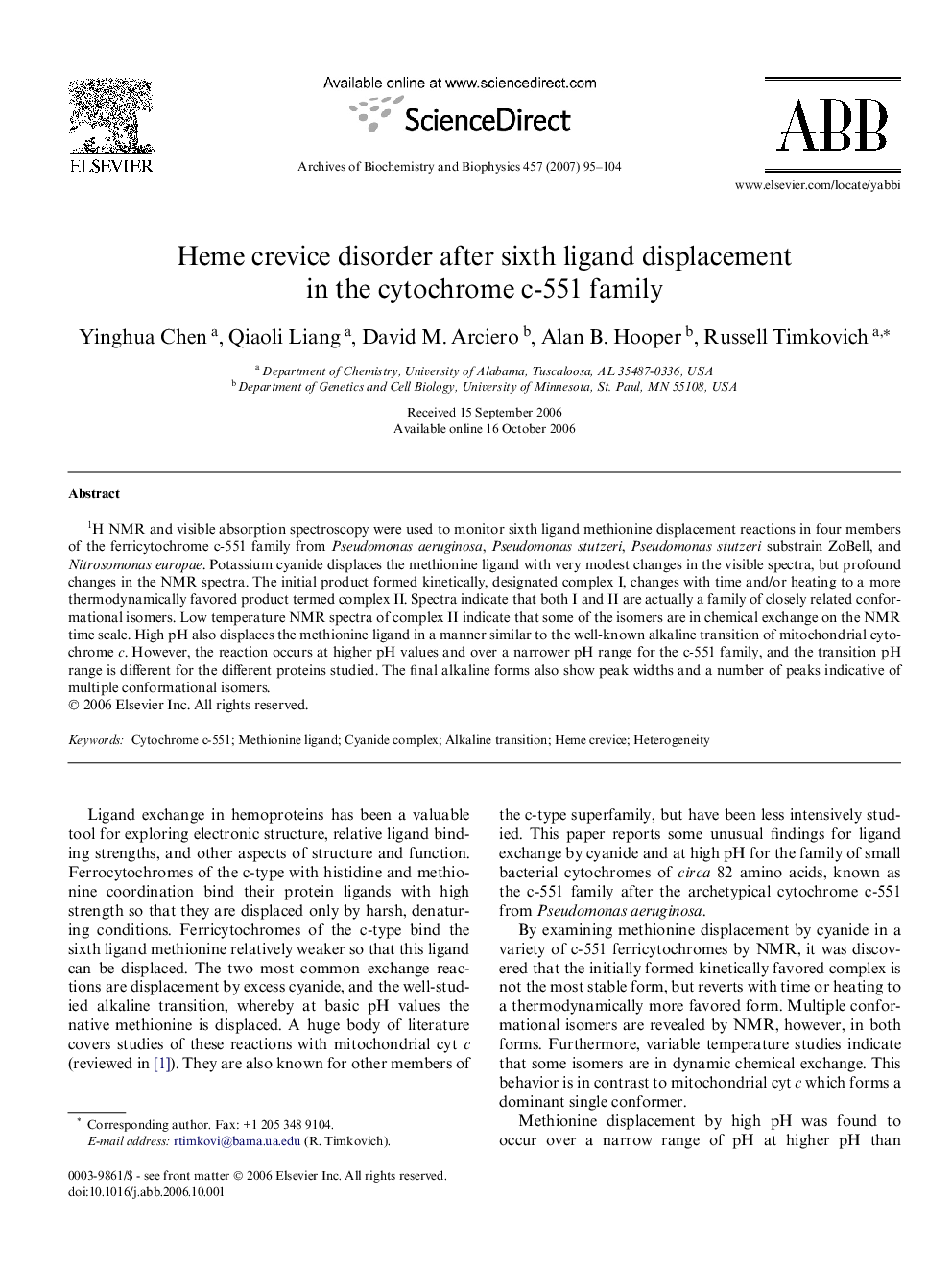| Article ID | Journal | Published Year | Pages | File Type |
|---|---|---|---|---|
| 1927359 | Archives of Biochemistry and Biophysics | 2007 | 10 Pages |
1H NMR and visible absorption spectroscopy were used to monitor sixth ligand methionine displacement reactions in four members of the ferricytochrome c-551 family from Pseudomonas aeruginosa, Pseudomonas stutzeri, Pseudomonas stutzeri substrain ZoBell, and Nitrosomonas europae. Potassium cyanide displaces the methionine ligand with very modest changes in the visible spectra, but profound changes in the NMR spectra. The initial product formed kinetically, designated complex I, changes with time and/or heating to a more thermodynamically favored product termed complex II. Spectra indicate that both I and II are actually a family of closely related conformational isomers. Low temperature NMR spectra of complex II indicate that some of the isomers are in chemical exchange on the NMR time scale. High pH also displaces the methionine ligand in a manner similar to the well-known alkaline transition of mitochondrial cytochrome c. However, the reaction occurs at higher pH values and over a narrower pH range for the c-551 family, and the transition pH range is different for the different proteins studied. The final alkaline forms also show peak widths and a number of peaks indicative of multiple conformational isomers.
